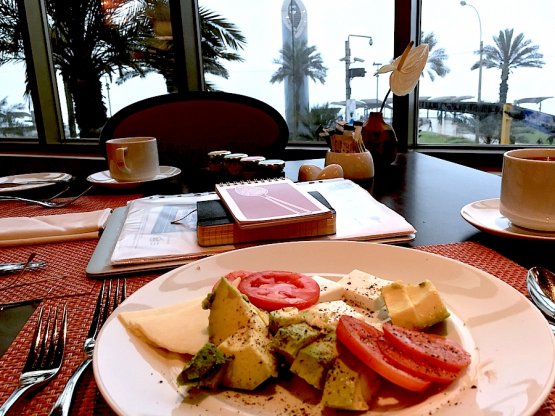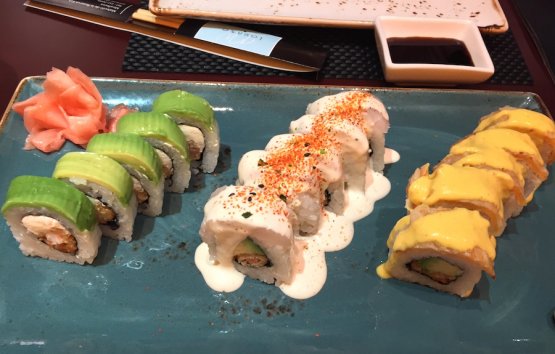After every trip, everyone asks me where I dined. In my job food is indeed the most important element, yet not the only one. There’s the day, with breakfast, lunch and supper, and there’s the night, time to sleep for sure but a room is also a refuge, a “box” where you can hide and find your intimacy. In Lima, at the end of April, I was a guest in Miraflores at the JW Marriott, JW stands for John Willard, born in 1900, the founder of the empire named after him. The first establishment, a beer business, came at 27, the first restaurant at 32, the first motel at 57, passing away at 84. Already important, in the past 32 years the Marriott group has grown to the extent it’s become, after Starwood recently acquired it, the largest group in the world, with a size that’s difficult to imagine.
The JW Marriott in Miraflores faces the Pacific Ocean, you have nothing in front of you and sometimes you see nothing, especially at dawn. It is nonetheless fascinating because during the autumn (our spring, remember we’re in the austral hemisphere), the coast of the Peruvian capital is characterised by low clouds and fog, a mix of humidity and scarce wind.

The first breakfast at the JW Marriott in Lima: hard to find creamier and tastier avocado, which the Peruvians call palta. It’s like poetry
You wake up at around 6, perhaps to call Italy, where it’s 1 pm, you draw the curtains and... surprise: everything’s grey, it looks like you’ve dived into a glass of barley water. In a way it’s very fascinating because in Italy we’re not used to having the ocean on the horizon and to what this can imply in some situations.
Of course, the marine horizon is a line like in Salento or Marseille but it looks like it’s deeper. This is partly because you know that thousands of kilometres, 14,316 to be precise, separate you from the other side, Cairns in Queensland, Australia. And partly because waves here have a completely different soul and movement. Their front is much wider and deeper. Their progress is imposing. You’re almost afraid of them, even from a distance. And this though one must say that the sea was calm and the weather good.

Japanese cuisine, nikkei to be precise, is typical of Peru. Yet it is weird even for someone from Milan to eat sushi as the first dish upon arriving in the hotel in Lima, straight from Italy
The
Marriott where I stayed is modern, the very opposite to the other Peruvian
JW in Cusco, created inside a monastery as you can easily tell from the name:
El convento. The distance between the two capitals, the current Spanish one and the old Inca one is 1,072 kilometres. The two buildings seem to mark the history of the nation. The one where I stayed is all made of crystal and metal. There are shops and a casino on the ground floor so you must get to the second floor.
Once out of the lift, on the left there’s the buffet restaurant where I at breakfast I was to have a unique avocado, called palta by the Peruvians, and on the right there’s the bar and nikkei restaurant. The executive chef is Julio Ferradas; the food&wine manager Rafael Lopez-Aliaga.
It was opened back in 2000, everything was built from scratch; twelve years later came the turn of Cuzco.
Rafael reminded me that: «Where you can now eat Japanese, the way we interpret it in Peru, there used to be a steak house. Good meat but what did it mean? Putting aside that they imported it from the United States at a significant price, guests arrived with their eyes filled with the sea and were offered a T-bone instead of seafood, they wound have never considered it perfect. Hence in time we decided to change everything and focus on the nikkei culture, on sushi and wok, ceviche prepared right there and there, all that is logical in Lima and by the sea. The same with regards to the buffet. It was 2007 and they asked to offer the best in town. How so? By changing constantly. Those coming here for the second time were not to find the same food. On top of that we change the general line every year».
Time proved them right: «It was hard at first, there are many places on the seafront and the competition is fierce. Then we grew, on top of those sleeping here – there are 300 rooms – or who are here on business during the day, external guests arrived, and now food represents 35% of the hotel’s revenue». A restaurant with hotel rather than a hotel with restaurant.
6. The end
The previous episodes: first, second, third, fourth and finally the fifth